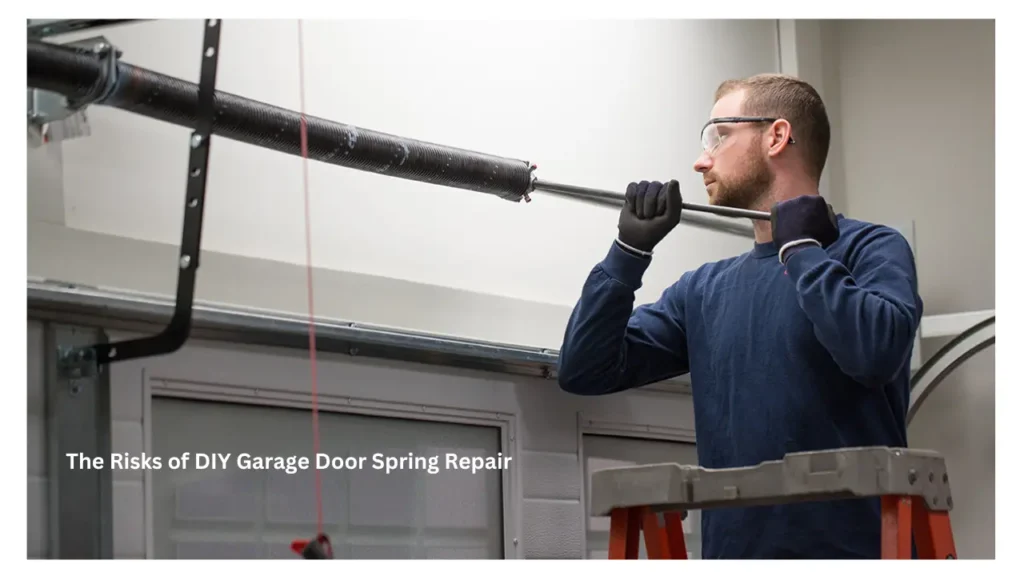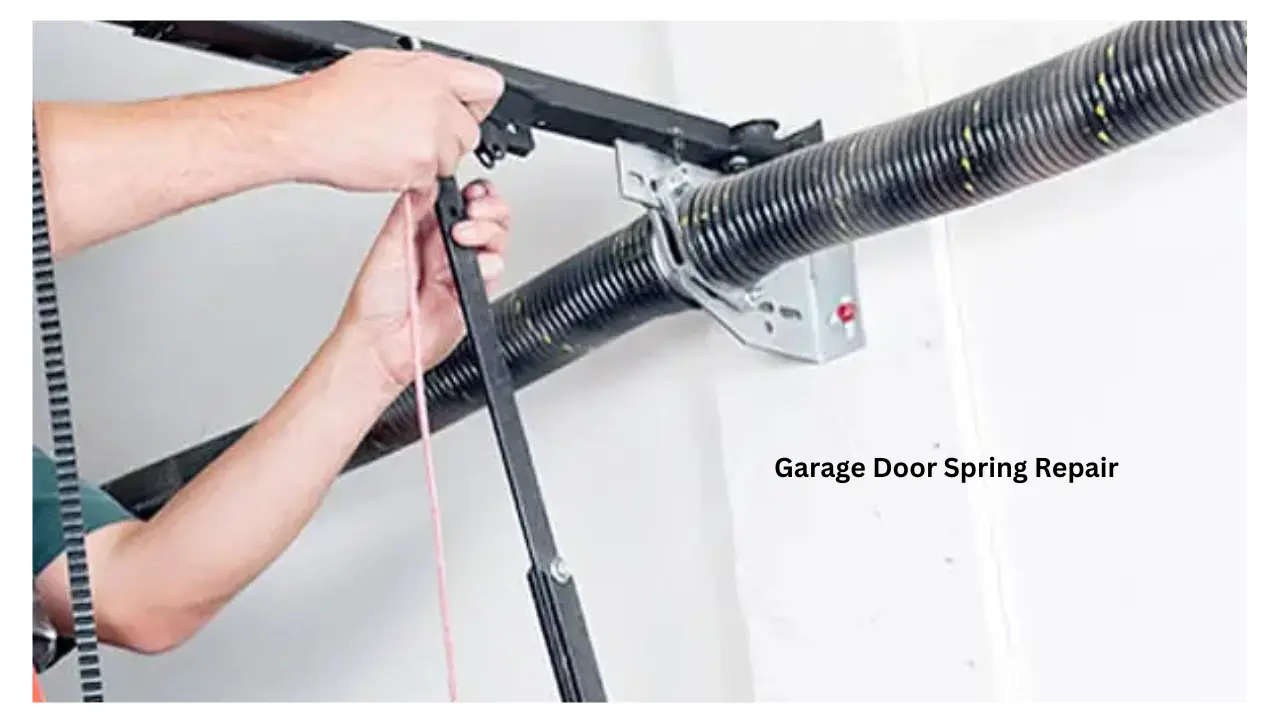Garage door springs play a crucial role in the smooth operation of your garage door. When they malfunction, it can lead to inconvenience and safety hazards. This guide will walk you through the essentials of garage door spring repair, ensuring you understand the process, recognize the signs of wear, and know when to seek professional help.
Garage Door Springs
Garage doors rely on springs to counterbalance their weight, making it easier to open and close them. There are two primary types of garage door springs:
Torsion Springs:
Mounted above the garage door opening, these springs use torque to lift the door. They are durable and commonly used in modern garage doors.
Extension Springs:
Located on either side of the door, these springs extend and contract to operate the door. They are typically found in older garage door systems.
How Garage Door Springs Work
Both types of springs function by storing mechanical energy when the door is closed and releasing it when the door is opened. Torsion springs twist and release energy, while extension springs stretch and contract. Understanding how they work can help you identify problems early and prevent severe damage.
ALSO READ: Duelist Attire Deepwoken Strategy Agility And Preparation
Signs Your Garage Door Springs Need Repair
Recognizing the early signs of spring issues can prevent further damage and ensure safety. Look out for:
- Difficulty Opening or Closing: If the door struggles to move or feels heavy, the springs might be worn out.
- Visible Gaps or Stretching: Gaps in torsion springs or overstretched extension springs indicate a problem.
- Loud Noises: Hearing loud bangs or squeaks during operation can signal spring failure.
- Uneven Door Movement: If one side of the door moves faster than the other, it suggests uneven spring tension.
- Door Falls Quickly: A properly working garage door should open and close smoothly. If it suddenly drops when closing, the springs may have failed.
The Risks of DIY Garage Door Spring Repair

While some homeowners might consider fixing garage door springs themselves, it’s essential to understand the risks:
- Safety Hazards: Springs are under high tension. Mishandling can lead to severe injuries.
- Specialized Tools Required: Proper repair requires specific tools that most homeowners don’t possess.
- Potential for Further Damage: Incorrect repairs can worsen the problem, leading to more costly fixes.
- Voiding Warranty: Many garage door manufacturers void warranties if repairs are not performed by licensed professionals.
ALSO READ: 3 Point Slinger For Camera Price Benefits And Tips
When to Call a Professional
Given the complexities and dangers associated with garage door spring repair, it’s advisable to consult professionals when:
- You Notice Any Signs of Wear: Early intervention can prevent accidents.
- The Door Becomes Inoperable: If the door won’t open or close, a professional can diagnose and fix the issue promptly.
- Regular Maintenance Is Due: Routine checks by experts can extend the lifespan of your garage door system.
- Lack of Proper Tools: Professionals have the right equipment to safely handle spring replacements.
Garage Door Spring Repair Pricing
The cost of garage door spring repair depends on various factors, including the type of spring, labor charges, and additional part replacements. On average, professional repair services charge between $150 and $350 for spring replacement. DIY replacements might seem cheaper, but they come with risks, and incorrect installation can lead to higher expenses in the long run. Below is a breakdown of potential costs:
| Service/Part | Estimated Cost |
|---|---|
| Torsion Spring Replacement | $150 – $300 |
| Extension Spring Replacement | $100 – $200 |
| Additional Labor Costs | $50 – $100 |
| Garage Door Cable Replacement | $50 – $100 |
| Complete Spring System Replacement | $200 – $500 |
Preventative Measures to Extend Spring Lifespan
To minimize the need for frequent repairs:
- Regular Lubrication: Apply a suitable lubricant to the springs every few months to reduce friction.
- Balance Checks: Periodically test the door’s balance by disconnecting the opener and manually operating the door. If it doesn’t stay open halfway, the springs might need adjustment.
- Avoid Excessive Use: Limit the number of times you open and close the garage door daily to reduce wear.
- Inspect Cables and Pulleys: Worn-out cables can put extra stress on the springs, leading to premature failure.
Step-by-Step Garage Door Spring Repair Process
While hiring a professional is the best approach, understanding the repair process can help homeowners make informed decisions. Here’s a general overview of how professionals repair garage door springs:
Safety First
Professionals begin by ensuring all safety precautions are in place. They disconnect the garage door opener and use clamps to keep the door from falling.
Identifying the Type of Spring
Determining whether the garage door uses torsion or extension springs helps in selecting the right replacement.
Releasing Tension
Using a winding bar, professionals carefully release tension from the torsion springs before removing them. For extension springs, they unhook the safety cables.
Removing the Old Spring
Once the tension is safely released, the old spring is carefully removed from its brackets.
Installing the New Spring
The new spring is installed by securing it in place and ensuring it matches the garage door’s weight and size specifications.
Tension Adjustment
After installation, professionals wind the spring to the correct tension level, ensuring smooth operation.
Testing the Door
The garage door is tested multiple times to confirm that it opens and closes properly without strain.
Cost Implications of Garage Door Spring Repair
Understanding the potential costs can help in planning:
- Professional Repair Costs: Hiring a professional for spring repair typically ranges from $150 to $350, depending on the type of spring and regional labor rates.
- DIY Costs: While the parts might be cheaper, the lack of expertise can lead to mistakes, resulting in higher expenses in the long run.
- Additional Costs: If other components like cables or pulleys need replacement, expect additional expenses of $50 to $100.
Choosing the Right Professional for the Job
Selecting a qualified technician ensures quality repair:
- Check Credentials: Ensure the professional is licensed and insured.
- Read Reviews: Look for testimonials from previous clients to gauge reliability.
- Obtain Multiple Quotes: Comparing prices can help you get a fair deal.
- Ask About Warranties: Reputable companies provide warranties on parts and labor.
The Importance of Regular Maintenance
Routine maintenance can prevent unexpected failures:
- Scheduled Inspections: Regular professional inspections can identify and address issues before they escalate.
- Component Checks: Ensure all parts, including cables and rollers, are in good condition to support spring function.
- Timely Replacements: Replacing worn-out parts promptly can prevent strain on the springs.
Frequently Asekd Questions
How long do garage door springs last?
Garage door springs typically last 7 to 10 years or 10,000 cycles (each cycle is one open and close action).
Can I replace just one spring?
It is recommended to replace both springs at the same time to maintain even tension and balance.
What happens if I don’t repair broken springs?
A broken spring can make the garage door inoperable and put additional strain on the opener, leading to further damage.
How can I tell if my garage door is unbalanced?
If the door does not stay in place when partially opened manually, it likely has unbalanced springs.
Should I lubricate garage door springs?
Yes, lubricating the springs with silicone-based or lithium grease every few months can extend their lifespan.
Conclusion
Garage door spring repair is a critical aspect of home maintenance that ensures the safety and functionality of your garage door. Recognizing signs of wear, understanding the risks of DIY repairs, and knowing when to call a professional can save time, money, and prevent injuries. Regular maintenance and choosing the right professional for repairs will keep your garage door operating smoothly for years to come.

